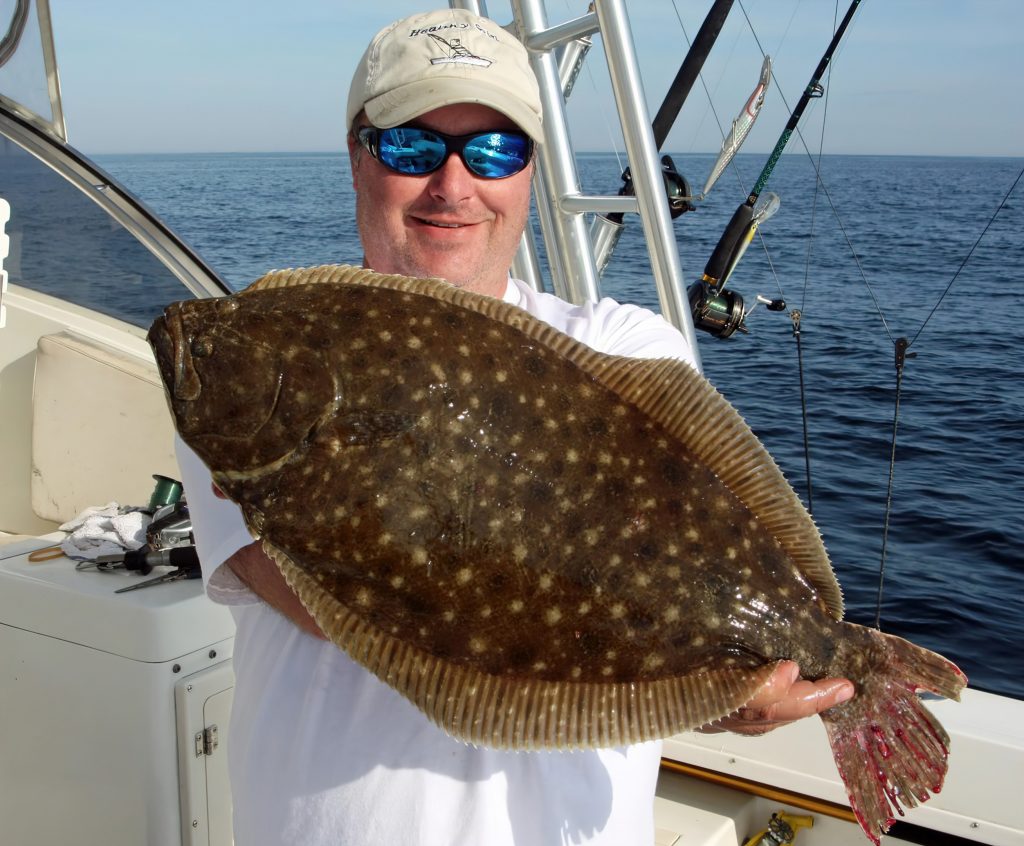Fishing for fluke can be a challenging and rewarding experience for any angler. This flatfish is highly sought after for its delicate, sweet flavor and can be found in coastal waters along the eastern seaboard of the United States. In this article, we will discuss some tips and tricks for success when fishing for fluke.
Understanding Fluke Habits and Habitat
If you want to catch fluke, it’s crucial to have a grasp of their behavior and natural environment. These flatfish prefer shallow coastal waters, usually found between 20 to 80 feet deep, where they hunt for small fish and crustaceans. They are also known to be territorial creatures that tend to stay in one area for an extended period. Therefore, locating the appropriate spot is crucial to a prosperous fluke fishing trip.
Selecting the Right Equipment
Selecting the right equipment is paramount for fluke fishing success. A medium-weight spinning rod with a fast action tip is optimal for this type of fishing. A 6 to 7-foot rod, paired with a 3000-4000 size spinning reel and 10-20 pound test braided line, provides the power and sensitivity required to detect bites and reel in fluke effectively. By using this setup, you’ll have an advantage over fluke and enhance your chances of bringing home a catch.
Choosing the Best Lures
Choosing the right lures is critical for successful fluke fishing. A bucktail jig with a squid or strip bait is a prevalent choice. Bucktails are flexible lures that can be fished at various depths and speeds, making them an excellent option for fluke fishing. Other effective lures for fluke include soft plastic baits and spinnerbaits. Experimenting with different lures and techniques can help you determine the best combination for your specific location and conditions. It’s essential to have a well-stocked tackle box to adapt to changing situations and increase your chances of hooking the elusive fluke.
Techniques for Catching Fluke
Anglers can use several techniques to catch fluke successfully. Drifting with a bucktail jig is one of the most effective methods. Cast the jig ahead of the boat and let it drift with the tide while bouncing it along the bottom. Another technique is using a teaser rig with a bucktail jig. This involves attaching a teaser, such as a small squid, above the jig to attract fluke to the bait. Other techniques include using soft plastic baits and spinnerbaits, as well as fishing around underwater structures, such as rocks and wrecks, where fluke are known to congregate. Experimenting with various techniques and lures can help you find what works best for the conditions and location you’re fishing in.
Location, Location, Location
Location is crucial when it comes to fluke fishing. Look for areas with sandy or muddy bottoms near channels, drop-offs, or other underwater structures. Fluke also like to congregate near artificial reefs or shipwrecks, where they can find shelter and food. Use a fish finder to locate these areas and increase your chances of success. Keep in mind that fluke can be highly territorial and may stay in one area for extended periods, so if you find a productive spot, it’s worth returning to it. Additionally, pay attention to the tide and current, as these factors can affect where fluke are located and how they’re feeding.
Timing is Everything
Timing is a crucial factor in fluke fishing success. While these fish can be caught throughout the year, they are most active during the warmer summer months, typically from May to September. During this time, they are more likely to be feeding and therefore more receptive to lures and bait. Additionally, fluke tend to feed during incoming and outgoing tides, so it is important to plan your fishing trip accordingly.
Early mornings and late evenings are often the best times to fish for fluke, as the water temperature is cooler and the fish are more active. During the midday heat, fluke tend to move to deeper waters to avoid the heat and bright sun. Anglers should keep this in mind and adjust their fishing schedule accordingly.
In Conclusion
Fishing for fluke can be a fun and rewarding experience for any angler. To be successful, it is essential to understand fluke habits and habitat, select the right equipment and lures, and use the proper techniques. Remember to locate the right areas, time your trip appropriately, and be patient. With these tips and tricks, you’ll be well on your way to catching your own delicious fluke.

